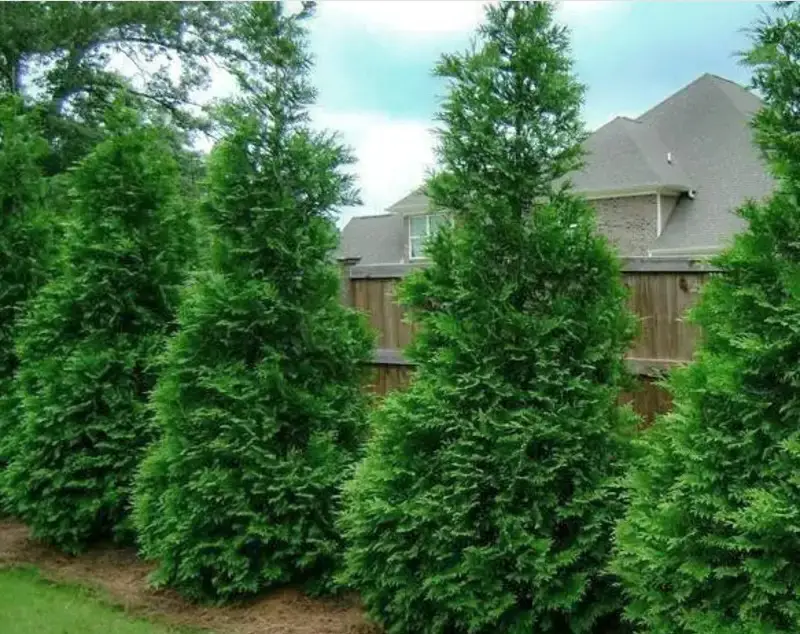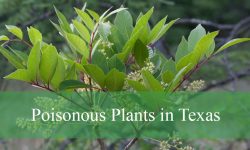The Green Giant arborvitae is a remarkable evergreen tree that stands out for its fast growth, rich green foliage, and versatility in landscaping. A hybrid between the Western redcedar (Thuja plicata) and the Japanese arborvitae (Thuja standishii), this tree offers year-round beauty with its dense, pyramid-shaped form. It is perfect for privacy hedges, windbreaks, or as a striking specimen in your garden.
In this guide, we will cover every aspect of Green Giant arborvitae care, from planting to maintaining a healthy, vibrant tree.
Understanding the Green Giant Arborvitae

The Green Giant arborvitae is not only fast-growing but also hardy and low-maintenance. This makes it an ideal choice for many gardeners and landscapers. Mature trees can reach heights of 40 to 60 feet and spread up to 12 to 18 feet, creating a lush, green wall that doesn’t brown or fade in winter. Its scale-like, glossy leaves emit a delightful fragrance when touched, and the dark brown, shaggy bark adds to its charm.
Key Characteristics
- Botanical Name: Thuja standishii x plicata ‘Green Giant’
- Common Name: Green Giant arborvitae
- Family: Cupressaceae
- Plant Type: Tree
- Mature Size: 40-60 ft. tall, 12-18 ft. wide
- Sun Exposure: Full sun to partial shade
- Soil Type: Well-drained clay, loam
- Soil pH: Acidic, neutral, or alkaline
- Hardiness Zones: 5-8
- Native Area: Hybrid species, no natural range
Green Giant Arborvitae Care
Sunlight Requirements
For optimal growth, the Green Giant arborvitae prefers full sun, meaning at least six hours of direct sunlight each day. However, it can tolerate partial shade, especially in regions with hot summers where some afternoon shade can help prevent stress on the tree.
Soil Conditions
The Green Giant arborvitae can adapt to various soil types, making it a hardy tree for different environments. That said, it thrives best in moist, fertile, and well-drained loamy soil. Avoid planting it in areas with standing water or poorly drained soils, as these conditions can lead to root rot. This tree can also grow in clay or sandy soils, though it may not achieve its full potential in poor-quality soils.
Watering
Watering is crucial in the first year of growth. After planting, ensure the soil remains consistently moist, but not waterlogged. For the first two months, you should water the tree frequently, ensuring the soil does not dry out. Once the Green Giant arborvitae is established (after the first year), it becomes drought-tolerant. During dry spells, water the tree about once a week, providing it with one inch of water each time. To help retain moisture, apply a 3 to 6-inch mulch layer around the base of the tree, but be careful not to pile the mulch against the trunk.
Temperature and Humidity
The Green Giant arborvitae can withstand temperatures as low as -20°F, making it hardy in USDA zones 5-8. However, it is not as winter-hardy as the Emerald Green arborvitae, which is better suited to more northern climates. It can tolerate snow and ice but may suffer some damage during extreme winter conditions.
Fertilization
Unlike many other trees, the Green Giant arborvitae does not require immediate fertilization upon planting. In fact, fertilizing too early can harm its roots. For the first year, it is best to allow the tree to establish itself without the added nutrients. In the second year, apply a balanced, slow-release fertilizer, such as a 4-3-4 formula, in early spring to encourage healthy growth. Once the tree is fully established, it generally does not need additional fertilization.
Planting Tips for Green Giant Arborvitae
Green Giant arborvitaes are often used to define property lines, create privacy hedges, or serve as windbreaks. Here’s how to plant them effectively:
- For a privacy hedge, plant the trees about 5 to 6 feet apart. This spacing allows them to grow together and form a dense, green screen.
- For landscaping purposes, where individual trees or small groups are desired, space them 12 to 18 feet apart to give them enough room to grow without overcrowding.
- Always plant your Green Giant arborvitae in a well-drained area with plenty of sun exposure. Avoid areas prone to waterlogging or excessive shade.
Pruning and Maintenance
One of the best features of the Green Giant arborvitae is its minimal maintenance requirements. It does not require regular pruning to maintain its attractive shape, as it grows naturally in a dense, pyramidal form. However, some light pruning can be done for aesthetic reasons or to remove any damaged branches, especially after a heavy snowstorm.
If you do choose to prune, the best time is late winter or early spring before new growth begins. Avoid over-pruning as this can stress the tree and reduce its natural elegance.
Common Pests and Diseases
The Green Giant arborvitae is notably resistant to many common pests and diseases, making it a low-maintenance tree in most landscapes. It is also more resistant to deer than other arborvitae species. However, you should still be vigilant for issues such as:
- Scale insects: These tiny pests can feed on the tree’s sap, causing leaves to yellow or drop. Treatment with horticultural oil or insecticidal soap can help manage them.
- Bagworms: These pests create unsightly bags of debris on the branches, feeding on the foliage. Regular monitoring and manual removal of the bags can prevent significant damage.
- Root rot: This can occur in poorly drained soils, so proper site selection and well-drained soil are essential for keeping your Green Giant arborvitae healthy.
Propagating Green Giant Arborvitae
Propagating Green Giant arborvitae can be done through stem cuttings, though it is more common in commercial settings where mist propagation systems are available. For home gardeners, the process involves taking semi-hardwood cuttings in summer or early fall. These cuttings should be dipped in rooting hormone and planted in a well-drained medium. Keep the cuttings moist and provide them with indirect sunlight. The rooting process can take several months.
Uses in Landscaping
The Green Giant arborvitae is a versatile tree that serves various purposes in the landscape. Some popular uses include:
- Privacy hedges: Its dense foliage makes it ideal for creating a natural privacy barrier between properties.
- Windbreaks: Thanks to its height and width, this tree can serve as an excellent windbreak, protecting homes and other plants from strong winds.
- Specimen trees: Planted alone or in groups, the Green Giant arborvitae can make a striking focal point in any garden or landscape design.
Conclusion
The Green Giant arborvitae is an exceptional tree for homeowners and landscapers looking for a fast-growing, low-maintenance evergreen with year-round beauty. Its dense, rich green foliage and adaptability to different soil types and climates make it a reliable choice for privacy hedges, windbreaks, and specimen planting.
With minimal care, this tree will thrive and become a valuable addition to any landscape. Whether you are planting it for privacy, aesthetics, or functionality, the Green Giant arborvitae is sure to impress.






